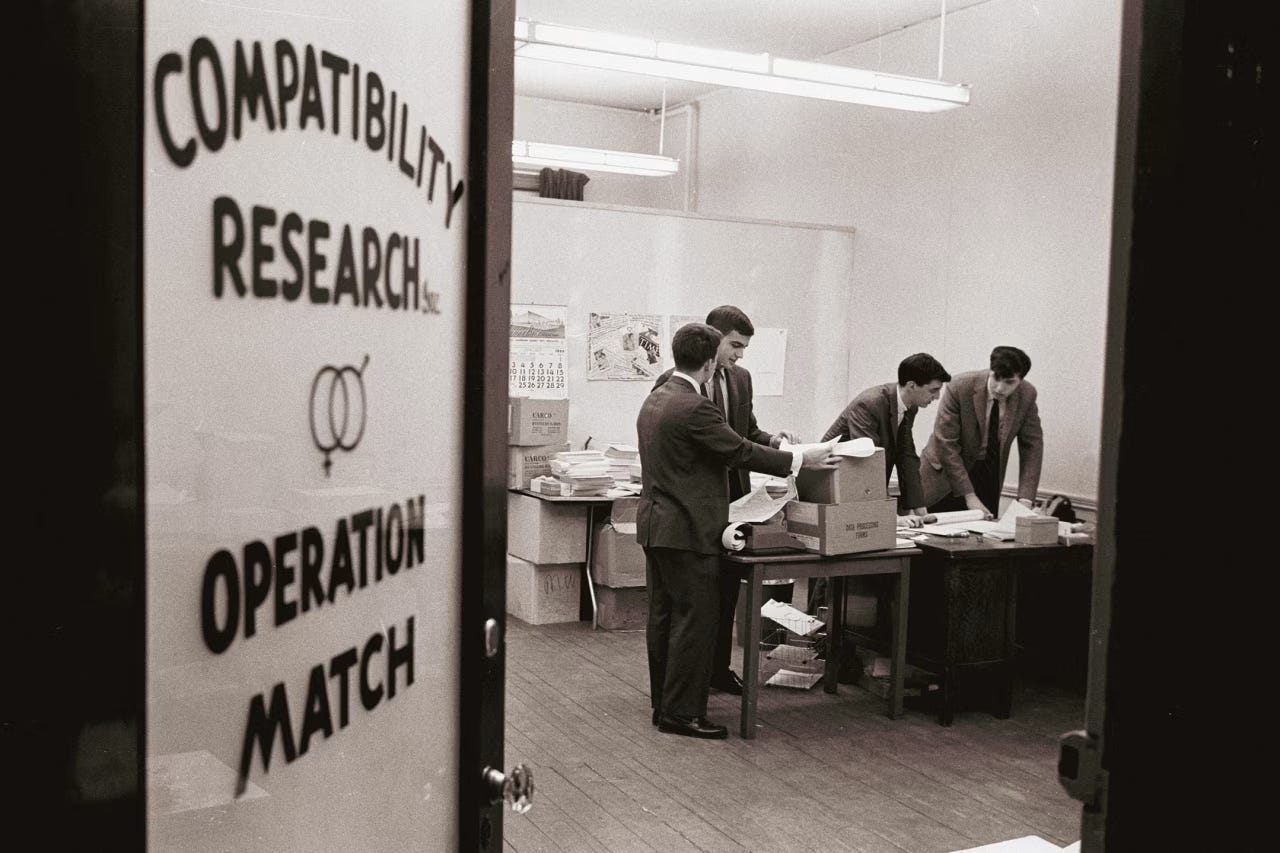How $3 bought you a soulmate
A story, quote, and lesson about real connection
Designed to end, not to keep going.
Strange as it sounds now, the very first computerized dating service wasn’t built to keep you coming back.
It was 1965, and four Harvard/Cornell undergrads, Jeff Tarr, David Crump, Vaughan Morrill, and Douglas Ginsburg, had an idea: what if a computer could pair people based on a few well-designed questions?
Operation Match was born. Students paid $3, filled out two copies of the same paper questionnaire (one for them and one for their “ideal” partner), and mailed it in.
The team used an IBM 1401 to sort compatibility scores and returned five potential matches via post. That’s it. No addictive UX, no infinite scroll, no dopamine-driven “likes.” Just you, a few names, and a nudge toward a coffee date. It spread like wildfire.
Within months, over 100,000 people, mostly college students, had signed up. The team soon processed matches across the country, fielding letters from curious minds who wanted to know: could machines really help us find love?
What’s most interesting is that Operation Match never planned for return customers. Its goal wasn’t to hook you in. It was to get you out: off the system and into the world. A good match meant you didn’t need the service anymore. Success was measured by people leaving.
Compare that to today. Today’s dating apps are polished, engineered, and endlessly monetized. Monthly subscriptions. Boosts. Super likes. Hidden algorithms. You’re not just a user, you’re the product.
And it shows. Most apps don’t profit when you find lasting love. They profit when you keep swiping. When you get just enough attention to stay… but not quite enough to leave. The goal isn’t satisfaction, it’s retention.
Most dating app users can feel it, too. The cycles of near-misses, mismatched intentions, “what are we?” conversations, ghostings, restarts. The longer you stay, the better for them.
That’s not to say people don’t meet great partners through apps. They absolutely do. But when it works, it’s often in spite of the system, not because of it.
“They’re thinking: Let’s keep this fucker coming back to the site as often as we can.”
- Justin Parfitt, e-dating entrepreneur (founder of HeyLets) on the mentality of a typical dating-site executive
There’s something refreshing about the original mindset of Operation Match. Tech wasn’t trying to control romance. It was trying to help it along.
And maybe that’s the lesson we need now: Stop outsourcing your love life to an algorithm designed to keep you unsatisfied. Start placing yourself where real connection lives.
Go to game night. Join a local class. Volunteer. Dance. Create. Let your hobbies, community, and friendships put you in the path of other people.
The irony is this: We’re more “connected” than ever, and lonelier than ever, too. The answer might not be better software. It might just be showing up.
So now I ask you:
Where in your life might real connection grow, if you just stepped away from the algorithm and back into the world?




Real connections take time and effort. Nothing good comes without work. Real plans are hard to realize. Everything worth having, asks for you to be able to forget about yourself and start giving something valuable to others. That is the beginning of a true relationship.